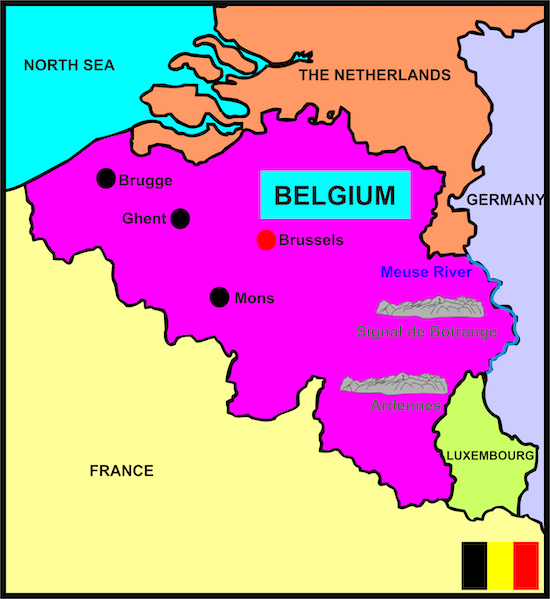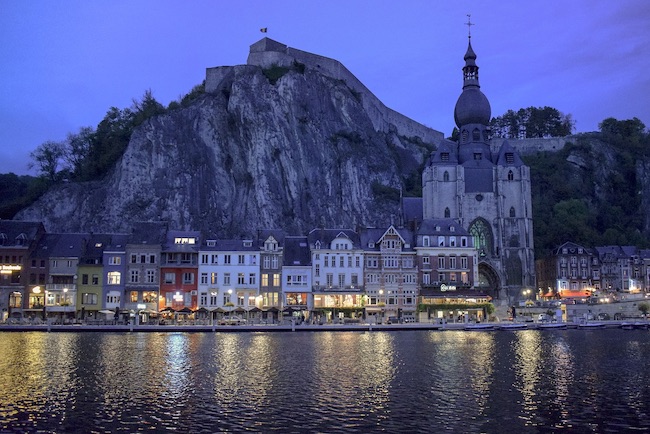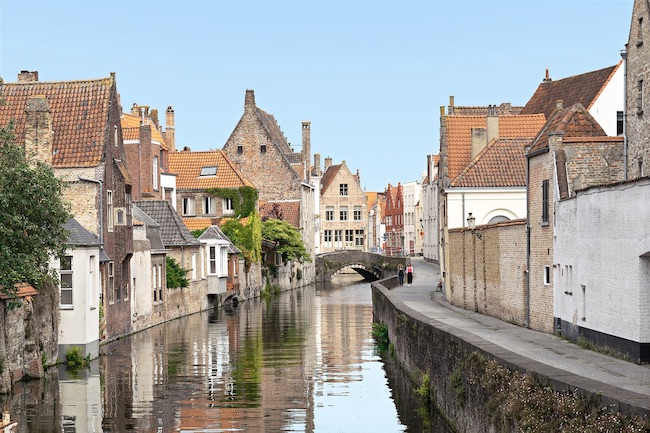Click on the map below to learn more
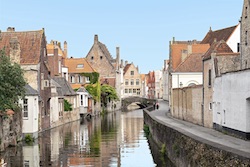 |
Brugge, BelgiumBrugge, also known as Bruges, is a beautiful city in the northwest of Belgium, known for its charming canals, picturesque medieval architecture, and rich cultural heritage. The city has been designated as a UNESCO World Heritage Site and attracts millions of tourists from all over the world every year. The history of Brugge dates back to the 9th century when it was a small settlement on the banks of the River Reie. The city gained prominence in the 12th century when it became an important commercial hub and a center of the wool trade. Brugge's prosperity continued in the following centuries, and the city became a hub of art, culture, and education. Today, Brugge is a beautiful city that is famous for its stunning medieval architecture, beautiful canals, and cobbled streets. The city has many beautiful churches, including the Church of Our Lady, which is home to Michelangelo's sculpture of Madonna and Child. Another notable landmark is the Belfry of Bruges, a medieval bell tower that offers stunning views of the city. One of the best ways to explore Brugge is by taking a boat tour of its canals. The city has been called the Venice of the North because of its beautiful canals and waterways, and a boat tour is an excellent way to see the city from a different perspective. During the tour, you'll pass by beautiful historic buildings and bridges, and see the city's stunning architecture up close. Brugge is also known for its delicious food, particularly its chocolate and beer. The city is home to many chocolate shops where you can taste some of the best chocolate in the world. Brugge is also known for its traditional Belgian cuisine, which includes waffles, frites, and mussels. And of course, no visit to Brugge is complete without trying some of the city's famous Belgian beers. In addition to its beautiful architecture and delicious food, Brugge is also home to many museums and galleries. The Groeningemuseum, for example, is a must-visit for art lovers, featuring a collection of paintings from the Flemish Primitives to contemporary art. The city also has many small galleries showcasing the work of local artists and artisans.
|
|
|
|
 |
Brussels, BelgiumBrussels is a vibrant and bustling city located in the heart of Belgium, which serves as the de facto capital of the European Union (EU). The city is known for its rich history, stunning architecture, diverse culture, and delicious cuisine, making it a top destination for tourists from all around the world. History and Culture Brussels has a rich history that dates back to the Roman era, and the city has been a political and economic center for centuries. It has been home to many important historical events, including the signing of the Treaty of Brussels in 1948, which led to the formation of the Western European Union. The city is also known for its unique blend of cultures, as it is home to people from all over the world, including many expats who work for the EU. This diverse population has led to a thriving art scene, with many galleries, museums, and cultural events that celebrate the city's multicultural heritage. Architecture One of the most striking features of Brussels is its stunning architecture, which reflects the city's rich history and cultural heritage. The city is home to many beautiful buildings, including the iconic Atomium, a towering steel structure that was built for the 1958 World Expo. Other notable buildings include the Royal Palace of Brussels, which is the official residence of the King and Queen of Belgium, and the Grand Place, a UNESCO World Heritage site that features stunning Gothic and Baroque architecture. Food and Drink Brussels is also known for its delicious cuisine, which is influenced by both French and Flemish cooking traditions. The city is famous for its chocolate, waffles, and beer, and there are many excellent restaurants and cafes where you can sample these delicacies. One of the best places to try traditional Belgian cuisine is in the Marolles neighborhood, which is home to many small, family-run restaurants that specialize in hearty stews and other local dishes. For a more upscale dining experience, head to the trendy Saint-Gilles neighborhood, which is known for its innovative fusion cuisine. |
|
|
|
 |
Ghent, BelgiumGhent, a charming medieval city in Belgium, is a hidden gem that often gets overshadowed by its more famous neighbors, Brussels and Bruges. However, Ghent is a must-visit destination for travelers looking to experience the rich history, culture, and art of Belgium. History and Culture Ghent's history dates back to the Middle Ages, and the city's medieval architecture and landmarks are well-preserved, making it a popular destination for history buffs. The city was once one of the largest and wealthiest in Europe, and many of its impressive buildings and churches reflect this prosperous past. Ghent is also known for its vibrant culture, with a thriving arts scene that includes museums, galleries, and festivals. The city is home to many famous painters, including Jan van Eyck and Peter Paul Rubens, whose works can be seen in the city's museums. Architecture One of the most striking features of Ghent is its stunning architecture, which ranges from Gothic to Renaissance to Baroque. The city is home to many impressive buildings, including the imposing St. Bavo's Cathedral, which houses the famous Ghent Altarpiece, and the Gravensteen Castle, a medieval fortress that dates back to the 12th century. Other notable landmarks include the Belfry of Ghent, a 14th-century bell tower that offers stunning views of the city, and the St. Nicholas Church, a beautiful Gothic church that dates back to the 13th century. Food and Drink Ghent is also a food lover's paradise, with a thriving culinary scene that includes traditional Belgian dishes as well as innovative fusion cuisine. The city is known for its delicious Flemish stews, fresh seafood, and of course, its famous Belgian chocolate. One of the best places to try local cuisine is in the Patershol neighborhood, which is home to many cozy restaurants and cafes that specialize in traditional Belgian dishes. For a more modern dining experience, head to the trendy South district, which is known for its innovative fusion cuisine and hip bars.
|
|
|
|
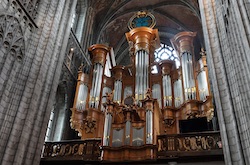 |
Mons, BelgiumMons, located in the French-speaking region of Belgium, is a city steeped in history, culture, and art. With its stunning architecture, world-renowned museums, and charming atmosphere, Mons is a must-visit destination for travelers looking to experience the best of Belgium. History and Culture Mons has a rich history that dates back to the Roman era, and the city has been shaped by many important historical events, including the Battle of Mons in World War I. The city is also known for its vibrant cultural scene, with many museums, galleries, and festivals that celebrate the arts. One of the city's most famous cultural events is the Doudou Festival, which takes place every year in June and involves a reenactment of the legendary fight between Saint George and the Dragon. The festival has been recognized as a UNESCO World Heritage event and draws thousands of visitors every year. Architecture Mons is home to many impressive architectural landmarks, including the Gothic-style Sainte-Waudru Collegiate Church, which dates back to the 15th century, and the Baroque-style Town Hall, which was built in the 17th century. The city also boasts several museums housed in historic buildings, including the Mons Memorial Museum, which is located in a former chapel and tells the story of the city's history and its role in World War I. Food and Drink Mons is known for its delicious cuisine, which features a blend of French and Belgian flavors. The city is famous for its hearty stews, fresh seafood, and artisanal beers, and there are many excellent restaurants and cafes where you can sample these delicacies. One of the best places to try local cuisine is in the Grand-Place, which is home to many charming cafes and restaurants. For a more upscale dining experience, head to the trendy Rue de Nimy, which is known for its innovative fusion cuisine and trendy bars.
|
|
|
|
 |
Signal de BotrangeThe Signal de Botrange is a prominent hill in the Hautes Fagnes plateau in eastern Belgium. At an elevation of 694 meters, it is the highest point in Belgium and attracts many visitors each year who come to enjoy the stunning views and natural beauty of the surrounding region. Geography and Ecology The Signal de Botrange is located in the Hautes Fagnes plateau, a vast area of high moorland that is characterized by its rugged terrain and unique ecology. The plateau is home to a wide range of plant and animal species, many of which are rare or endangered. The area is also home to many bogs, which provide important habitat for a variety of plants and animals. Visitors to the area can see rare species such as the European bog turtle and the bog rosemary, as well as many species of birds and insects. History and Culture The Signal de Botrange has a rich history that dates back to the Middle Ages, when the plateau was used for grazing and hunting by local communities. In the 19th century, the area became popular with tourists who came to enjoy the scenic beauty and unique ecology of the region. Today, the Signal de Botrange is a popular destination for hikers, cyclists, and nature lovers. Visitors can explore the many trails and routes that crisscross the plateau, or simply take in the stunning views from the top of the hill. Recreation and Tourism The Signal de Botrange is a popular destination for outdoor enthusiasts, with many hiking and cycling trails that offer visitors the chance to explore the region's stunning natural beauty. The area is also popular with birdwatchers, who come to see rare species such as the Eurasian curlew and the northern lapwing. In addition to its natural attractions, the Signal de Botrange is also home to several visitor centers and museums that offer information about the area's ecology, history, and culture. Visitors can learn about the unique plant and animal species that call the plateau home, as well as the history of the local communities who have lived and worked in the region for centuries.
|
|
|
|
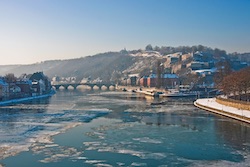 |
The Meuse RiverThe Meuse River, also known as the Maas, is a major river in Western Europe that flows through France, Belgium, and the Netherlands. With a length of 950 kilometers, the Meuse is an important waterway that has played a significant role in the history, culture, and economy of the regions it traverses. Geography and Ecology The Meuse River originates in the Langres Plateau in France and flows through Belgium before reaching the Netherlands, where it empties into the North Sea. The river's basin covers a total area of 36,000 square kilometers and is home to a diverse range of flora and fauna. The Meuse is known for its scenic beauty, with many picturesque towns and villages lining its banks. The river also passes through several natural parks and reserves, including the Meuse Valley Natural Park in France and the Hoge Kempen National Park in Belgium. History and Culture The Meuse River has played a significant role in the history and culture of the regions it flows through. It has been used as a major trade route since ancient times, with goods such as timber, coal, and iron being transported along its waters. The river has also been the site of many important historical events, including the Battle of Verdun in World War I, which took place along the Meuse River in France. Today, many museums and monuments in the region commemorate the river's role in these events. The Meuse is also home to many vibrant towns and cities that offer a rich cultural experience for visitors. One of the most famous is the city of Maastricht in the Netherlands, which is known for its charming old town, stunning architecture, and rich cultural scene. Recreation and Tourism The Meuse River is a popular destination for recreational activities such as boating, fishing, and hiking. The river's tranquil waters and scenic beauty make it the perfect spot for a leisurely boat ride or a relaxing walk along the banks. There are also many bike paths and hiking trails that run alongside the river, offering visitors the opportunity to explore the surrounding countryside and enjoy the natural beauty of the region. |
|
|
|
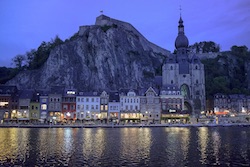 |
The ArdennesThe Ardennes is a region in eastern Belgium that is known for its rugged terrain, dense forests, and picturesque villages. The region covers a large part of Belgium and extends into neighboring countries such as France, Luxembourg, and Germany. The Ardennes is a popular destination for travelers looking to explore the natural beauty and rich history of the region. Geography and Ecology The Ardennes is a densely forested area with rugged terrain that is characterized by rolling hills and steep valleys. The region is home to a diverse range of flora and fauna, including many species of birds, mammals, and reptiles. The Ardennes is also home to several rivers and lakes, including the Meuse and Semois rivers, which offer opportunities for recreational activities such as kayaking, fishing, and hiking. History and Culture The Ardennes has a rich history that dates back to ancient times, with many historic landmarks and sites of interest scattered throughout the region. The region was the site of several important battles during World War I and World War II, and there are many monuments and museums that commemorate these events. The Ardennes is also home to several charming villages and towns, each with their unique character and culture. One of the most famous is the town of Bastogne, which played a significant role in the Battle of the Bulge during World War II. Today, the town is a popular tourist destination, with many museums, monuments, and other attractions that showcase its rich history. Recreation and Tourism The Ardennes is a popular destination for travelers looking to enjoy outdoor activities such as hiking, cycling, and camping. The region's dense forests and rugged terrain offer endless opportunities for exploration, and there are many well-marked trails and routes for hikers and cyclists to follow. There are also many quaint villages and towns throughout the Ardennes that offer visitors a taste of traditional Belgian culture and cuisine. Visitors can sample local delicacies such as Ardennes ham and cheese, as well as enjoy traditional Belgian beers and other beverages. |
The Ardennes Region |
|
| Population: | 11,700,000 (2021) |
| Area: | 11,787 sq. miles |
| Capital City: | Brussels |
| Largest City: | Brussels |
| Currency: | Euro |
| Official Language: | Dutch, French, German |
| GDP (Gross Domestic Product) | $506 Billion (25th) |
| Back to Map | |
Brugge, Belgium
|
|
|
|
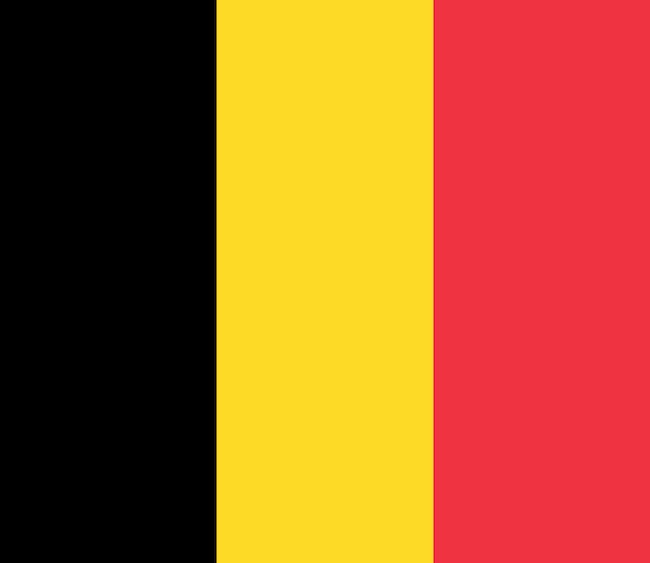 |
|
The Belgian flag is a tricolor flag consisting of three equal vertical bands in black, yellow, and red. It is one of the few flags in the world that features a black stripe. The colors of the Belgian flag have symbolic significance. The black stripe represents the dark days of the country's past, while the yellow and red stripes represent the bright future of the Belgian people. The yellow color represents the wealth of the country, while the red color symbolizes the bravery and determination of the Belgian people. The flag was first adopted on January 23, 1831, shortly after Belgium declared independence from the Netherlands. It was designed by Lucien Jottrand, a Belgian journalist and lawyer who was inspired by the French tricolor flag. Since its adoption, the Belgian flag has been flown proudly throughout the country and has become an important symbol of Belgian national identity. It is a common sight at public events, such as sporting events and national holidays, and is also flown at government buildings and embassies around the world. In addition to its use as a national flag, the Belgian flag is also used as a symbol of regional identity. The country is divided into three main regions: Flanders, Wallonia, and Brussels-Capital. Each of these regions has its flag, which is based on the Belgian flag but features additional elements, such as a coat of arms or regional symbols. Back to Map |
|
